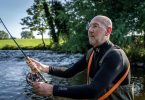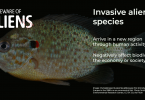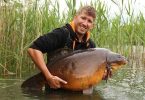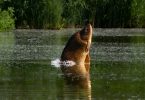The Salmon & Trout Association (S&TA) has today urged the Environment Agency to keep its robust stance over two issues impacting Hampshire’s chalkstreams – discharge of raw sewage into the Bourne Rivulet and a standard for phosphate discharges from watercress farms.
The village of St Mary Bourne, close to Andover, has suffered backed-up sewage in homes, gardens and on its roads since late summer 2012, due to a rising water table from the heavy rainfall and a totally degraded sewage system.
Southern Water has spent significant resources pumping sewage into tankers to try and alleviate the problem, but this has not prevented the water company from discharging sewage directly into the Bourne Rivulet, famous from Harry Plunkett-Green’s iconic book, Where the Bright Waters Meet, and containing a rare, completely self-sustaining wild brown trout population.
S&TA has urged the EA to insist that Southern Water includes a completely modernised sewage system for St Mary Bourne in its Business Plan, and that pressure is put on Ofwat to allow relevant funding in the next water price review in 2014 (PR14).
S&TA’s CEO, Paul Knight, said, “we submitted a complaint to the European Commission in September last year over the Government’s failure toprotect the Hampshire Avon, itself a case study for widespread degradation of our chalkstreams, of which the UK contains some 85% of the world’s total resource. Allowing raw sewage to be discharged into such a fragile ecosystem as the Bourne Rivulet, despite the EA refusing permission to do so, is yet another example of the disregard many industries have for our aquatic environment today, and is totally unacceptable in the 21st century.”
William Daniel, who manages the Bourne downstream from St Mary Bourne, said, “Rivers being used as open sewers, people forced to resort to outdoor portable loos and raw sewage backing up into village homes: it sounds like something out of the 19th century, rather than a reality oflife for many in St Mary Bourne today.
Now, Southern Water has again begun over-pumping ‘excess flows’ (raw sewage) into the Bourne at several points, turning the water from crystal-clear to murky and milky. Southern Water claims it is an emergency, though the problem has been going on for around 20 years. Southern Water’s efforts are demonstrably not fit for purpose and risk long-term environmental damage tothis iconic chalkstream.”
Meanwhile, the EA is to be congratulated for taking a robust stance over demanding a lower level of phosphate discharge into rivers from watercress farms. Excess phosphates create an over-enrichment of the river, leading to algal blooms and knock-on environmental damage, and watercress farms are widely regarded as being one of the main sources of the nutrient. S&TA has stronglysupported the revised standard – 0.06 parts per million (ppm) above the background natural level of 0.02 ppm – and urged the EA not to bow to industrial pressure to ease the standard.
Paul Knight said, “this is a very welcome move from the EA in an attempt to cut back on nutrient enrichment of our rivers, which we often refer to as ‘diffuse pollution,’ and has the widespread support of fisheries and conservation groups. We urge the EA to hold its ground on this issue, and for the watercress industry to alter its operation so that it abides by the new standard and so minimises its impact on the aquatic environment from excessive nutrient discharge.”







